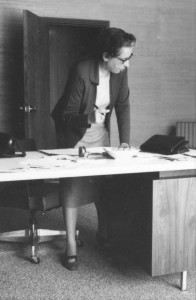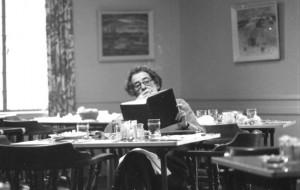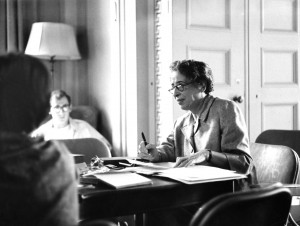It’s that time of year again: the time when high school seniors previously anxious about whether they would get into the college of their dreams, now get to worry about choosing the college that is just right for them. In the last few weeks applicants have found out where they’ve been accepted, and now they are trying to envision where they will be most likely to thrive. Where will I learn the most, be happiest, find friends that will last a lifetime? How to choose? I thought it might be useful to re-post my thoughts on this, with a few revisions.
For many high school seniors, the month of April is decision time. Of course, for many the decision will be made on an economic basis. Which school has given the most generous financial aid package? Wesleyan is one of a small number of schools that meets the full financial need of all admitted students according to a formula developed over several years. There are some schools with larger endowments that can afford to be even more generous than Wes, but there are hundreds (thousands?) of others that are unable even to consider meeting financial need over four years of study.
After answering the question of which schools one can afford, how else does one decide where best to spend one’s college years? Of course, size matters. Some students are looking for a large university in an urban setting where the city itself plays an important role in one’s education. New York and Boston, for example, have become increasingly popular college destinations, but not, I suspect, for the classroom experience. But if one seeks small classes and strong, personal relationships with faculty, then liberal arts schools, which pride themselves on providing rich cultural and social experiences on a residential campus, are especially compelling. You can be on a campus with a human scale and still have plenty of things to do. Wesleyan is somewhat larger than most liberal arts colleges but much smaller than the urban or land grant universities. We feel that this gives our students the opportunity to choose a broad curriculum and a variety of cultural activities on campus, while still being small enough to encourage regular, sustained relationships among faculty and students.
All the selective small liberal arts schools boast of having a faculty of scholar-teachers, of a commitment to research and interdisciplinarity, and of encouraging community and service. So what sets us apart from one another after taking into account size, location, and financial aid packages? What are students trying to see when they visit Amherst and Wesleyan, or Tufts and Middlebury?
Knowing that these schools all provide a high quality, broad and flexible curriculum with strong teaching, and that the students all have displayed great academic capacity, prospective students are trying to discern the personalities of each school. They are trying to imagine themselves on the campus, among the people they see, to get a feel for the chemistry of the place — to gauge whether they will be happy there. Hundreds of visitors will be coming to Wesleyan next week for WesFest (our annual program for admitted students). They will go to classes and athletic contests, musical performances and parties. And they will ask themselves: Would I be happy at Wesleyan?
I hope our visitors get a sense of the personality of the school that I so admire and enjoy. I hope they feel the exuberance and ambition of our students, the intelligence and care of our faculty, the playful yet demanding qualities of our community. I hope our visitors can sense our commitment to creating a diversity in which difference is embraced and not just tolerated, and to public service that is part of one’s education and approach to life.
We all know that Wesleyan is hard to get into (even more difficult this year!). But even in the group of highly selective schools, Wes is not for everybody. We aspire to be a community committed to boldness as well as to rigor, to idealism as well as to effectiveness. Whether in the sciences, arts, humanities or social sciences, our faculty and students are dedicated to explorations that invite originality as well as collaboration. The scholar-teacher model is at the heart of our curriculum. Our faculty are committed to teaching and to shaping the fields in which they work. Earlier this week, Henry Abelove gave a stirring lecture at the Center for Humanities call “What I Taught and How I Taught It.” I was Henry’s student in the mid 1970s, and members of his first-year seminar from a few years ago were also in the audience. His care for students and his dedication to the material being taught were everywhere in evidence. How proud and grateful I am to have been his student and colleague!
The commitment of our faculty says a lot about who we are, as does the camaraderie around the completion of senior theses this week. We know how to work hard, but we also know how to enjoy the work we choose to do. That’s been magically appealing to me for more than 30 years. I bet the magic will enchant many of our visitors, too.





